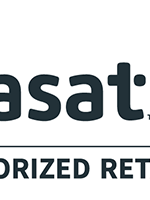Satellite internet has revolutionized the way we work remotely, allowing individuals to stay productive from anywhere in the world. Whether you’re a digital nomad exploring different corners of the globe or a professional who prefers the comfort of your own home office, satellite internet offers numerous benefits that traditional internet connections simply can’t provide. In this article, we will delve into the intricacies of satellite internet, discuss its role in remote work, highlight its advantages, and provide insights into overcoming potential challenges. We will also guide you through the process of making the switch to satellite internet, ensuring a seamless transition to a more flexible and efficient work environment.
Understanding Satellite Internet
What is Satellite Internet?
Satellite internet is a type of internet connection that utilizes communication satellites in space to transmit and receive data. Unlike traditional internet services that rely on physical cables, satellite internet connects users to the internet via a satellite dish on their property. This technology enables internet access in areas where terrestrial connections are limited or unavailable, such as rural or remote locations.
One of the key advantages of satellite internet is its widespread coverage. Since the signal is beamed from a satellite in geostationary orbit, users can access the internet from virtually anywhere on the planet, as long as they have a clear line of sight to the satellite. This makes satellite internet an ideal solution for individuals living in isolated areas or regions with challenging terrain that make laying cables impractical.
How Does Satellite Internet Work?
In order to access the internet using satellite technology, users need a satellite dish installed at their location. The dish communicates with a geostationary satellite in orbit, which then relays the data to and from the user’s computer or device. The process involves three main components: the user terminal, satellite network operations center, and the satellite itself. With this setup, users can establish a reliable and high-speed internet connection even in areas where traditional internet infrastructure is lacking.
When a user requests data from the internet, the signal travels from their computer to the satellite dish, which then beams it up to the orbiting satellite. The satellite receives the signal, processes it, and transmits it back down to the network operations center on Earth. From there, the request is sent to the appropriate website or online service through the terrestrial internet backbone. The response follows the same path in reverse, traveling from the server to the satellite, then down to the user’s dish and finally to their device, completing the data transfer loop.
The Role of Satellite Internet in Remote Work
The Importance of Reliable Internet for Remote Work
Remote work heavily relies on a stable and fast internet connection. Whether you’re participating in virtual meetings, accessing cloud-based applications, or collaborating with colleagues in real-time, a reliable internet connection is crucial to maintain productivity. Satellite internet ensures a consistently strong connection, regardless of your physical location, allowing you to stay connected and productive no matter where you choose to work.
Satellite Internet vs Traditional Internet for Remote Work
When comparing satellite internet to traditional internet options for remote work, satellite internet offers distinct advantages. Traditional options, such as DSL or cable connections, may be limited or unavailable in remote areas. Satellite internet bridges this gap by providing reliable connectivity worldwide. While traditional options may suffer from slower speeds and latency issues, satellite internet accommodates high-speed data transfer, minimizing interruptions and lagging during important video calls or file transfers.
The Advantages of Satellite Internet for Remote Work
Accessibility and Coverage
Satellite internet’s most significant advantage lies in its unparalleled accessibility and coverage. Traditional internet infrastructure requires physical cables to be installed, limiting access in rural or remote areas. On the other hand, satellite internet can reach even the most isolated locations, ensuring that everyone has the opportunity to work remotely and stay connected. This increased accessibility boosts productivity and empowers individuals to work from virtually anywhere.
Speed and Performance
One major concern with remote work is the speed and performance of the internet connection. Slow connections can hinder productivity and cause frustration. Satellite internet addresses this issue by providing high-speed connections comparable to traditional options. With its advanced technology and dedicated satellites, satellite internet offers fast download and upload speeds, allowing remote workers to seamlessly collaborate, share files, and access information in real-time.
Security and Privacy
Security and privacy are paramount when working remotely. Satellite internet ensures a secure and private connection, protecting sensitive data from potential cyber threats. By utilizing encrypted connections and state-of-the-art security measures, satellite internet provides remote workers with peace of mind, knowing that their data is safe and secure. This level of protection allows individuals to focus on their work without worrying about compromising their privacy.
Overcoming Challenges with Satellite Internet
Dealing with Weather Interference
While satellite internet offers numerous advantages, one potential challenge is weather interference. Adverse weather conditions, such as heavy rain or snow, can affect the signal strength of satellite internet. However, advancements in technology have significantly mitigated this challenge, and modern satellite internet systems are designed to be resilient to weather interference. Additionally, satellite providers often offer support and troubleshooting services to help users overcome any weather-related issues they may encounter.
Managing Data Caps and Usage
Another consideration with satellite internet is the management of data caps and usage. Satellite internet providers typically impose data usage limits to ensure fair and efficient network usage. However, it’s essential for remote workers to be mindful of their data consumption, especially when engaging in bandwidth-intensive activities such as video conferencing or large file transfers. By understanding their data plan and implementing data-saving practices, remote workers can optimize their productivity and avoid unnecessary overages.
Making the Switch to Satellite Internet
Evaluating Your Internet Needs
Prior to making the switch to satellite internet for remote work, it’s crucial to evaluate your internet needs. Consider the nature of your work, the number of users, and the types of activities you regularly engage in online. This assessment will help you determine the appropriate data plan and internet speed required to support your remote work requirements.
Choosing a Satellite Internet Provider
When selecting a satellite internet provider, consider factors such as coverage, reliability, customer support, and pricing. Research different providers and compare their offerings to find the one that best aligns with your requirements. Read customer reviews and testimonials to gain insights into their service quality and reputation within the satellite internet industry.
Setting Up Your Satellite Internet Connection
Once you have chosen a satellite internet provider, the next step is to set up your satellite internet connection. This typically involves installing a satellite dish at your location and configuring the necessary equipment. Consult the instructions provided by your provider and, if needed, seek professional assistance to ensure a smooth and successful installation.
Conclusion
In conclusion, satellite internet offers significant benefits for remote work, enabling individuals to stay productive from any location. Its accessibility, speed, and security make it an ideal choice for those seeking a reliable and efficient internet connection. While challenges such as weather interference and data management exist, advancements in technology and provider support help remote workers overcome these obstacles. By evaluating their internet needs and selecting a reputable provider, individuals can make a seamless transition to satellite internet, empowering them to work remotely and maintain productivity from anywhere in the world.




